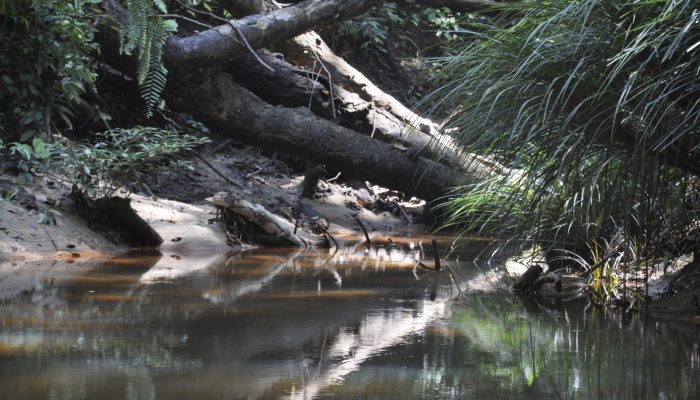
Collapsing dams are a staple of disaster films, but the form that these take in natural systems is also surprisingly varied. Streams and rivers can be blocked by a range of rapid and gradual inputs. One of the lesser-known causes of stream blockage is through the accumulation of large woody debris – tree trunks and large branches – to form a log jam.
The impact of these jams on river geomorphology can be varied, but in some extreme cases, when they break, large flood waves can wash out huge downstream areas. This kind of hazard is often poorly understood, so a new study exploring how logjams in Bolivia can drive downstream flooding published in Earth System Dynamics by Umberto Lombardo provides an important addition to our understanding.
To form a log-jam, tree trunks and other large woody debris needs to end up in the river through erosion and transport processes. The majority of the rivers in the assessed area meander back and forth, which encourages erosion of the river banks; this can topple trees into the river. This bank erosion provides the source of the woody debris which then gets stuck in the channel, beginning the construction of a log-jam.
Once the jam is formed there is potential for flooding, which has important consequences for the surrounding forest. Behind the dam, silt and sand accumulates, and once the river either breaks the dam or redirects around it, sediment is also distributed downstream, along with the woody debris.
Using satellite imagery, Lombardo explores a chunk of the Bolivian part of the Amazon rainforest to look for the effects of log-jam induced flooding on forest dynamics. He shows in this study that the sudden influx of mud and silt onto the forest floor characteristically results in the die-off of much of the vegetation. Where floods occur repeatedly, the dense rainforest ecosystem is replaced by a drier, more savannah-like ecosystem.

Evolution of the Cuberene River. The river flows from southwest to northeast. From 1995 to 2016, the location of the log-jams propagated upriver, along the two rivers that form the Cuberene. By 2016, large areas that were forested in 1995 had been transformed into savannah. An east–west road crossing the Cuberene in 1995 is completely obliterated in the 2016 image. Also notice how the light green areas in early stages of the successional process in 1995 are already forested by 2016. From Lombardo U., 2017.
The flood-induced ecosystem change is not an isolated one, either; in the study area, the amount of forest killed by floods is nearly as great as the amount lost to deforestation for agricultural growth, and the near-annual recurrence of these events in many rivers means that it is a consistent cause of ecological shifts.
From a human perspective, these log-jams are a risk that may not be appreciated. Recent studies have shown that human driven deforestation can accelerate the rate at which river banks in tropical regions erode; so while the removal of trees may initially reduce the propensity for log-jams in extensively managed stretches of river, the faster rate of meandering may also lead to log-jam formation further down the line sooner than we might think. A clearer understanding of such river systems, where log-jam formation and coupled flooding is part of the normal evolution of the stream system, would serve us well in rapidly developing tropical countries that rely on forest ecosystems.
While the dynamics of log-jams have been studied in more temperate regions, this study represents a significant step into the unknown in tropical regions. The Amazon as a whole is a crucial component of the global carbon cycle, so a clearer understanding of the feedbacks between rivers, erosion, and the forest ecosystem will allow us to create more nuanced models of the rainforest dynamics.
The more scientists study forests, the clearer it becomes that these ecosystems regularly undergo significant disturbances simply as part of their natural cycles. Forest fires and pest outbreaks can disrupt a given stand of forest; log-jams are another example of a disturbance, this time closely associated with river dynamics. Forests renew and regenerate themselves at a range of scales, from individual trees to whole swathes of woodland, and log-jams provide an additional mechanism that can lead to die-off of mature forest and replacement by new growth.
By Robert Emberson, a science writer based in Canada
References
Lombardo, U.: River logjams cause frequent large-scale forest die-off events in southwestern Amazonia, Earth Syst. Dynam., 8, 565-575, https://doi.org/10.5194/esd-8-565-2017, 2017




Boom Lift
A job well done! This is a beautiful piece. Trust me, the sky is your limit